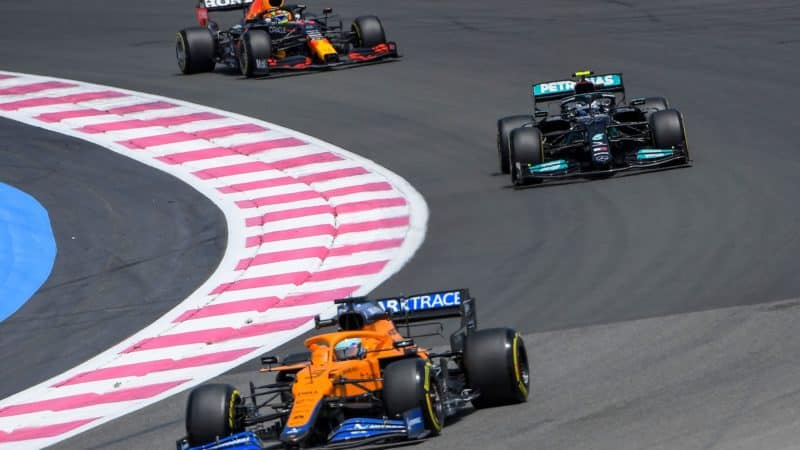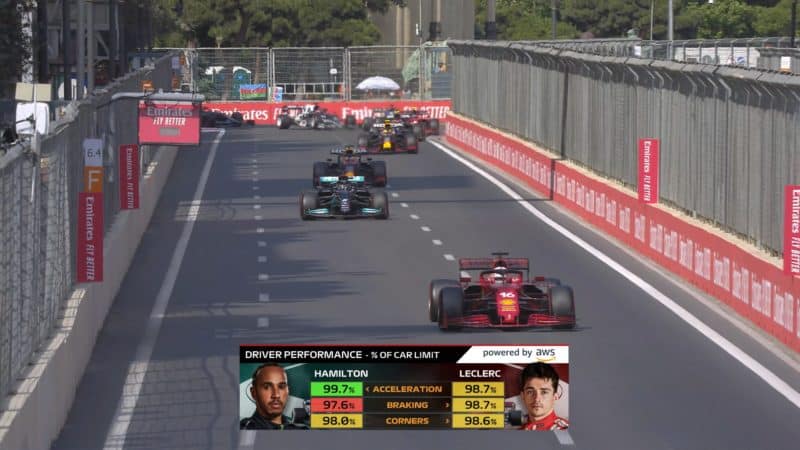F1 hopes to demonstrate the minuscule differences between each driver on the grid and highlight the strengths relative to others in how they make up their lap time.
The graphic opens the door to plenty of debate as well. If a driver is able to consistently extract close to the maximum from their cars in lesser machinery, how would they do in top cars on the grid?
“In order to get to this percentage of maximum car performance, we have had to build some complex car and simulation models,” F1 expert consultant Rob Smedley explained.
“The principal element that to look at was the front and rear grip available to the driver. If we were able to calculate this then this would give us the performance envelope of the car.
“We would then need to calculate the actual grip, so in reality, how much the driver is actually using. By comparing the two numbers we end up with the percentage values.”
In order to build the maximum performance benchmark, data is extrapolated from sensors on the cars such as speed sensors and accelerometers and a parametric tyre model is then used to build the picture of the maximum force each tyre is capable of generating in various car conditions.
From there, each driver is assessed versus their theoretical maximum performance benchmark and ranked in a percentage.
Is Hamilton better than Verstappen? Is the opposite true? Perhaps the new driver insight graphics could help settle or stoke the fires of the debate.



